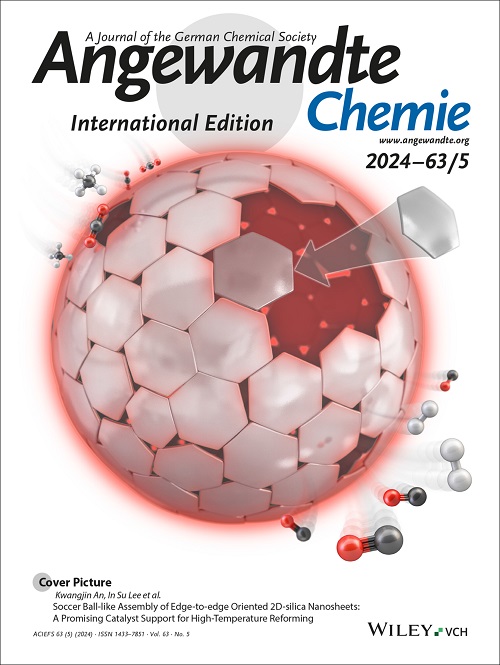Optimizing Bromine Complexation and Kinetics: A Bisimidazole Strategy for High‐Performance Zn‐Br Static Batteries
IF 16.9
1区 化学
Q1 CHEMISTRY, MULTIDISCIPLINARY
引用次数: 0
Abstract
Zinc–bromine (Zn–Br) static batteries are promising for large‐scale energy storage, yet the practical application is hindered by the long‐standing trade‐off about bromine complexing agents (BCAs) between bromine complexation strength and redox kinetics. Herein, we report a rationally designed bisimidazolium salt, 1,4‐bis(3‐methylimidazolium‐1‐yl) butane dibromide ([bMImB]Br2), which features a symmetric molecular structure that reconciles this contradiction. [bMImB]Br2 demonstrates strong bromine affinity, stemming from its high atomic charge of N+ and low solubility—properties comparable to those of tetraalkyl‐quaternary ammonium salts. Simultaneously, it retains low steric hindrance typical of monoimidazole compounds, thereby enabling fast electrode kinetics. As a result, Zn–Br batteries incorporating [bMImB]Br2 deliver a high specific energy of 116 Wh·kg−1, alongside an average coulombic efficiency (CE) of 99.22% and energy efficiency (EE) of 89.35% at 10 mAh·cm−2 (0.5 C) for over 150 cycles. Furthermore, the flexible pouch cell maintains a discharge capacity of 110 mAh and 99.7% CE over 100 cycles, even under mechanical deformation. This work offers a generalizable molecular design strategy for developing next‐generation BCAs in halogen‐based energy storage systems.优化溴络合和动力学:双咪唑策略用于高性能Zn - Br静态电池
锌-溴(Zn-Br)静态电池有望用于大规模储能,但长期以来,溴络合剂(bca)在溴络合强度和氧化还原动力学之间的权衡阻碍了其实际应用。在此,我们报道了一种合理设计的双咪唑盐,1,4‐双(3‐甲基咪唑‐1‐基)丁烷二溴([bMImB]Br2),它具有对称的分子结构,可以调和这一矛盾。[bMImB]Br2表现出很强的溴亲和性,这源于它的高N+原子电荷和低溶解度,其性质与四烷基季铵盐相当。同时,它保留了典型的单咪唑化合物的低位阻,从而实现了快速的电极动力学。结果表明,含有[bMImB]Br2的锌- br电池在10 mAh·cm - 2 (0.5 C)下循环超过150次,平均库仑效率(CE)为99.22%,能量效率(EE)为89.35%,比能高达116 Wh·kg - 1。此外,即使在机械变形的情况下,柔性袋状电池也能在100次循环中保持110毫安时的放电容量和99.7%的CE。这项工作为卤素储能系统中下一代bca的开发提供了一种可推广的分子设计策略。
本文章由计算机程序翻译,如有差异,请以英文原文为准。
求助全文
约1分钟内获得全文
求助全文
来源期刊
CiteScore
26.60
自引率
6.60%
发文量
3549
审稿时长
1.5 months
期刊介绍:
Angewandte Chemie, a journal of the German Chemical Society (GDCh), maintains a leading position among scholarly journals in general chemistry with an impressive Impact Factor of 16.6 (2022 Journal Citation Reports, Clarivate, 2023). Published weekly in a reader-friendly format, it features new articles almost every day. Established in 1887, Angewandte Chemie is a prominent chemistry journal, offering a dynamic blend of Review-type articles, Highlights, Communications, and Research Articles on a weekly basis, making it unique in the field.

 求助内容:
求助内容: 应助结果提醒方式:
应助结果提醒方式:


